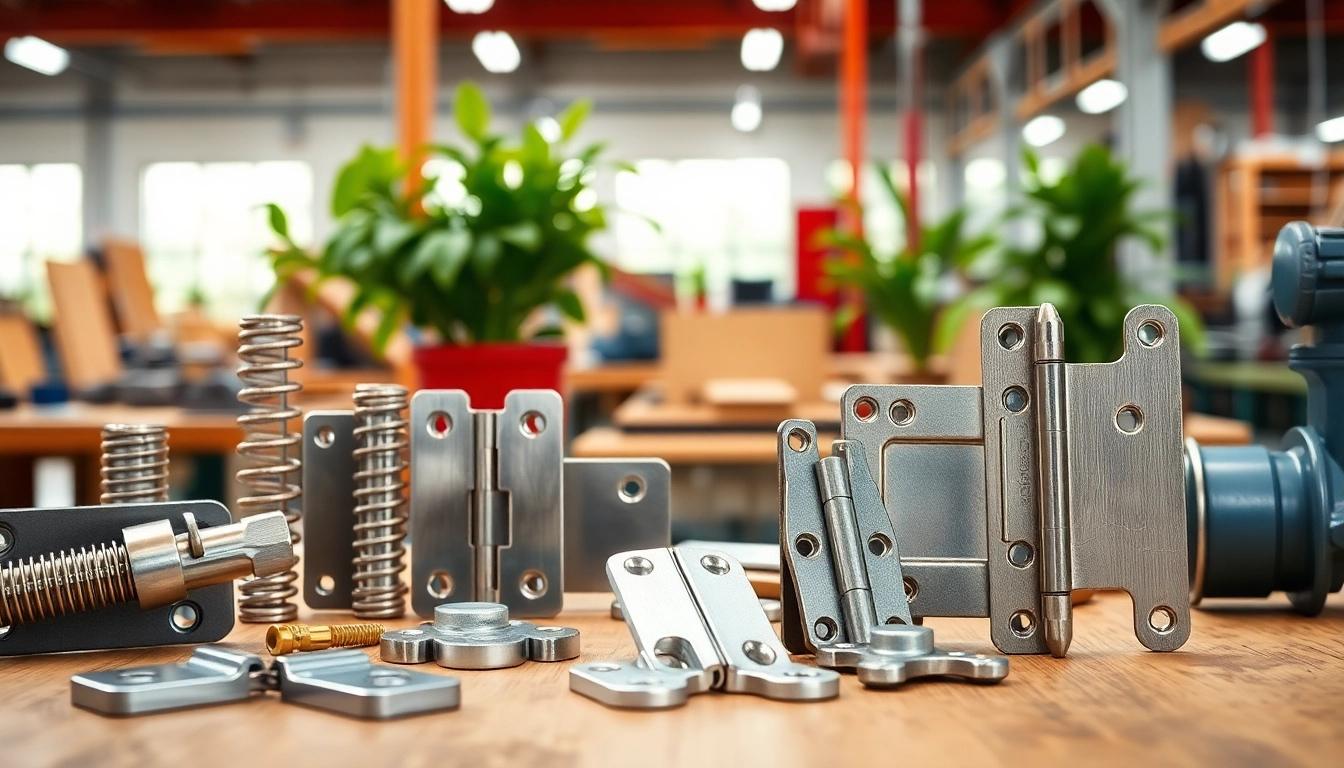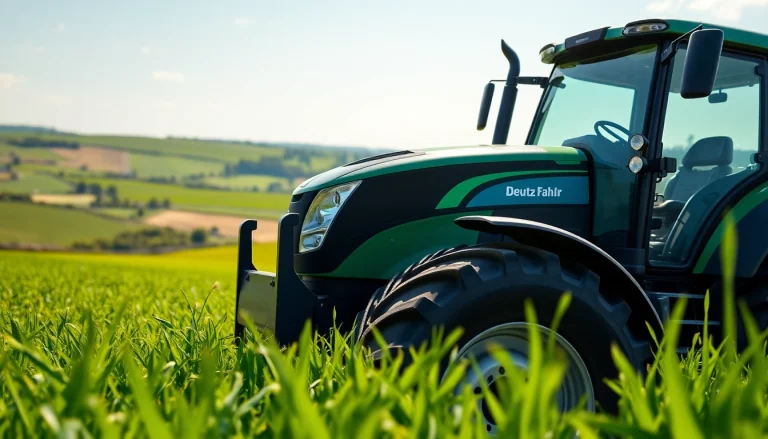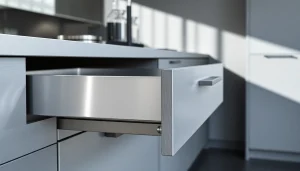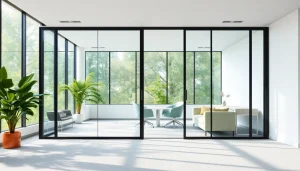Understanding Different Types of Hinges
Types of Hinges and Their Uses
When selecting hinges, it’s imperative to understand the various types available and their corresponding applications. Several hinge designs cater to specific uses, making them suitable for different projects.
- Butt Hinges: Commonly used in doors, these hinges consist of two plates (leaves) that are fixed to the door and the frame. Their simple design makes them versatile for residential and commercial purposes.
- Pivot Hinges: These are ideal for doors that require more than just standard swinging motion, providing a unique 360-degree opening capability. They are often used in commercial environments.
- Continuous Hinges: Also known as piano hinges, these run the entire length of the door, distributing weight evenly and providing long-lasting durability. They are commonly used in heavy-duty applications.
- Spring Hinges: These hinges come equipped with a built-in spring mechanism, providing automatic closure. They are typically used for interior doors where self-closing is desired.
- Strap Hinges: Used mainly for gates and sheds, strap hinges have long leaves that distribute weight and allow for heavy doors to swing more easily.
Benefits of Choosing the Right Hinge
Selecting the appropriate hinge type provides numerous advantages. First, the right hinge enhances functionality. For instance, spring hinges offer the convenience of automatic closing, thus simplifying access. Additionally, correct hinge selection contributes to improved safety; improper hinges can lead to door failures that pose hazards.
Moreover, operational efficiency is increased with the right type of hinge, ensuring doors operate smoothly and with less wear and tear. This extends the lifespan of the door and its components.
Common Mistakes When Selecting Hinges
Understanding hinge specifications is crucial, as many individuals tend to overlook factors such as weight capacity and material compatibility. A common mistake is choosing a hinge based solely on appearance rather than functionality; this often leads to premature wear or failure.
Furthermore, failing to assess the environment where the hinge will be installed can result in corrosion or degradation, particularly in high moisture areas. Always consider the operational context when sourcing your hinges, utilizing options such as stainless steel for outdoor applications to avoid rust.
Why Quality Matters in Hinge Supply
The Importance of Durability and Reliability
Quality hinges significantly contribute to a product’s overall performance. Durable hinges reduce the need for frequent replacements, translating to cost savings over time. A high-quality hinge is engineered to withstand stress, environmental conditions, and frequent use without faltering.
How Quality Affects Performance
The performance of a door or gate is inherently tied to the quality of its hinges. High-quality hinges ensure a smoother operation, lower friction, and better load distribution. Such features result in greater energy efficiency, as users do not have to exert excessive force to open or close doors.
Comparing Price vs. Quality with Hinge Suppliers
It’s common to encounter suppliers offering low-priced hinges that seem appealing at first glance. However, these hinges may compromise quality, ultimately leading to higher expenses due to replacements or repairs. Investing in high-quality hinges, sourced from a reputable Hinge Supplier, results in long-term savings and peace of mind.
Choosing the Right Hinge Supplier for Your Needs
Key Factors to Consider When Selecting a Supplier
When searching for a hinge supplier, evaluating several key factors is essential. These include the supplier’s reputation, product range, and delivery performance. Consideration of physical product quality, compatibility with your existing architecture, and the possibility of customization are also important factors for professional and industrial applications.
Evaluating Supplier Reputation and Reviews
Supplier reputation is paramount; potential customers can often gauge this through online reviews and testimonials. Seeking feedback from past clients allows prospective buyers to understand product performance and customer service levels. Familiarizing oneself with supplier ratings on platforms can highlight those with a robust commitment to quality and reliability.
The Role of Customer Service and Support
Customer service is a critical component when partnering with a hinge supplier. A reputable supplier should not only provide quality products but also offer support during the selection and installation processes. Look for suppliers who are responsive, knowledgeable, and willing to assist with inquiries or issues.
Innovations in Hinge Manufacturing
Emerging Technologies in Hinge Production
Recent advancements in manufacturing technologies have revolutionized hinge production. Automation and precision engineering enhance the efficiency and accuracy of hinge design, resulting in high-quality products that meet rigorous standards. CNC machining and 3D printing are now common practices that allow for precise specifications and increased production rates.
Sustainability Practices Among Hinge Suppliers
The increasing emphasis on sustainability has guided many hinge suppliers toward eco-friendly practices. These include utilizing recyclable materials, waste reduction initiatives, and energy-efficient manufacturing processes. Suppliers who prioritize sustainability are not only appealing to environmentally conscious consumers but also contribute positively to their industries.
Trends Shaping the Future of Hinge Design
The future of hinge design is being shaped by innovative trends aimed at enhancing user experience and efficiency. Designs incorporating smart technology, such as hinges with integrated sensors or locking mechanisms, are becoming prevalent. These advancements offer additional security and convenience, particularly in residential settings.
Installation and Maintenance of Hinges
Best Practices for Installing Hinges
Proper installation is crucial for optimal hinge performance. Ensure hinges are oriented correctly, align them with pre-drilled screw holes, and use screws that match in grade and length to the hinge’s specifications. Additionally, ensuring that the door frame and door sizes are compatible can prevent installation complications.
Maintenance Tips for Longevity
Regular maintenance extends the lifespan of hinges. Periodically check for signs of wear, such as misalignment or difficulty in operation. Lubricate hinges with appropriate oils to minimize friction and prevent rust or other forms of corrosion. Cleaning hinges with a soft cloth and ensuring they are free from debris can also enhance performance.
Troubleshooting Common Hinge Issues
Common issues include squeaking, misalignment, and loosening of screws. Squeaking can be easily resolved through lubrication, while misalignment typically requires adjustments to the hinge position or door alignment. Check screws regularly and tighten them if they are loose, replacing any that are damaged or corroded.








